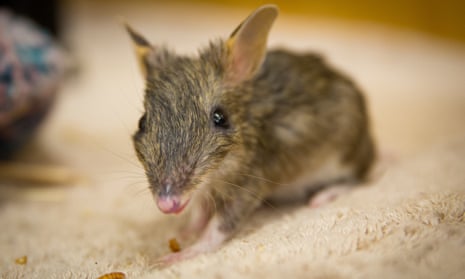Australia may be the world’s leader in mammal extinction, with accelerating threats to native biodiversity in a changing climate – but successful conservation efforts may provide a glimmer of hope.
New research suggests that 26 Australian species have recovered enough to no longer meet the criteria for listing as threatened under the Environment Protection and Biodiversity Conservation (EPBC) Act.
The study, published in the journal Biological Conservation, reviewed all animals that were currently or previously listed as threatened under the act, between 2000 and December 2022.
The analysis found that the population size and distributions of 14 mammal, eight bird, two frog, one reptile and one fish species had sufficiently improved to no longer meet listing criteria.
These included the greater bilby, burrowing bettong, western quoll, eastern barred bandicoot, sooty albatross, Bulloo grey grasswren, and Murray cod.
In addition, three species that have been formally delisted have shown legitimate recoveries, the research found: the humpback whale (delisted in 2022), whose numbers have rebounded after commercial whaling bans; and the waterfall frog and common mistfrog (both delisted in 2020), two amphibians whose numbers have stabilised after being decimated about 30 years ago by the deadly chytrid fungus.
Unlike in the US, in Australia the EPBC Act does not mandate the conservation status of threatened species to be reviewed regularly. The study’s first author, Prof John Woinarski of Charles Darwin University, said this made getting adequate information for some of the species “quite tricky”.
Some species, such as the Flinders Ranges worm-lizard, southern cassowary and gouldian finch, have benefited from habitat management, the researchers found.
Populations of others have increased after intensive control of introduced predators, and by translocating animals to predator-free islands.
The EPBC Act stipulates that species should not be delisted if doing so might have a negative impact on their survival. While the researchers believe successes should be celebrated, they warn that conservations gains could be lost if management efforts were to cease.
Sarah Legge, study co-author and professor at Australian National University, said: “Australian mammals are so sensitive to cat and fox predation, and one of the most effective things you can do is exclude cats and foxes with fencing or by marooning the species on an island.”
“Most of these mammal species used to occur in really big distributions across the continent. Now they’re only found in areas … which cover less than 1% of their previous distribution,” she said. “We’ve prevented extinction but we haven’t really solved the problem.”
Woinarski described the improvements as “partial successes” that depended upon ongoing active management.
“Almost no species that are affected by broad scale vegetation loss, clearing, forestry, climate change or changed fire regimes have recovered.”
No threatened invertebrates recovered significantly, which the researchers suggest may be the result of the limited conservation funding for insects.
“The limited recovery of fish is due to limited capacity for abating the threats of introduced fish predators and of exploitation and degradation of aquatic systems,” they wrote.
Dr Michelle Ward, a conservation scientist at WWF Australia who was not involved in the research, said: “The key problem with delisting species is that then they no longer have monitoring and are no longer are eligible for certain funding schemes.”
Assoc Prof Conrad Hoskin, a terrestrial ecologist at James Cook University, said the delisting of the two frog species made sense for prioritising conservation efforts.
Conservationists were better off “focusing on things that are in decline or in severe threat”, he said.
